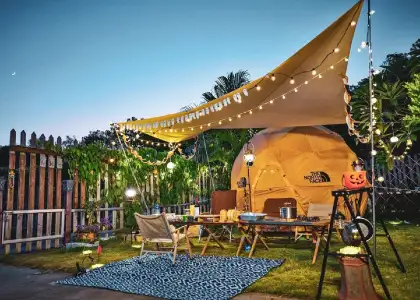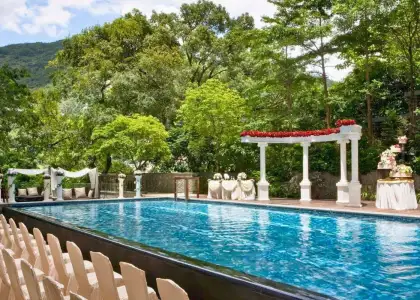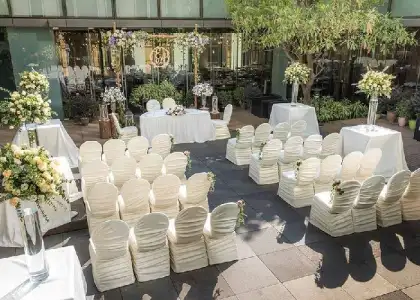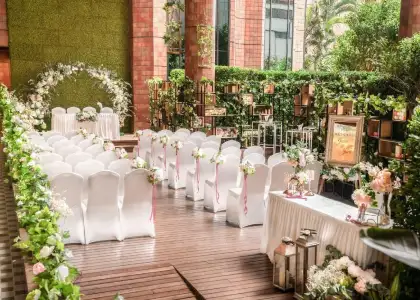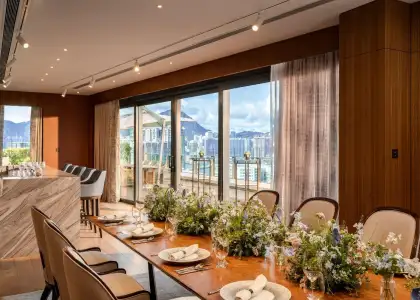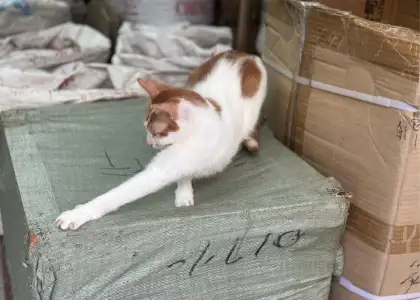8 Caverns and Caves to Check Out in Hong Kong

Tall skyscrapers, bustling city roads, and regretful nights roaming Lan Kwai Fong make up a small yet highly represented part of what you can explore in Hong Kong. But of the many natural wonders to explore, caverns and caves are second to none when it comes to igniting a sense of mystery and imagination for adventure-seekers. Luckily, Hong Kong is home to several enigmatic caverns and caves of man-made and naturally weathered varieties.
From the rich history of Hong Kong’s sea-faring days to our sporadic interest in mining precious metals, here is our selection of interesting caves and caverns to explore over the weekend.
Cheung Po-tsai Cave
Cheung Po-tsai was a fearless 19th century Guangdong pirate, famed for his Robin-hood-esque treatment towards the less fortunate. His career of piracy was short-lived, but his legacy has undoubtedly endured the test of time, with many “Cheung Po-tsai” caves supposedly littering the Hong Kong shoreline.
The most popular cave to his name can be found on the outlying islands of Cheung Chau, measuring about 10 metres deep and 88 metres long. It is said that Cheung Po-tsai used this natural cave to hide from the Qing government authorities who were after his life, also acting as a place to stash his loot, none of which has been recovered (yet).
Marked with white paint, this inconspicuous tight squeeze of an entrance is just wide enough for one person to enter at a time. Descending through the narrow passage requires some deftness, so get practising on your side-shuffling skills every time you hop off the MTR during rush hour.
Location: Cheung Po-tsai Cave, Cheung Po-Tsai Road, Cheung Chau, New Territories
Tap Mun Cave

Tap Mun, otherwise known as Grass Island, is home to an interesting sea cave located on the western coast near the looped trail circling the southern end of the island. Blessed with yet another enigmatic legend, this cave is the apparent exit of a secret passage from the 400-year-old Tin Hau Temple on the opposite shore of the island — if you can imagine the people who might have used it in desperation all those years ago.
It’s also a brisk 10-15-minute walk from the Balanced Rock, a puzzling rock formation that seems to defy the laws of physics.
Location: Tap Mun Cave, Tap Mun Island (Grass Island), Tai Po, New Territories
Lin Ma Hang Mine Cave
Buried deep in New Territories, the village of Lin Ma Hang remains almost untouched for decades thanks to its history of being closed off. Lin Ma Hang Lead Mine is a cave like no other, with its characteristic three-portal entrance and its cavernous spaces that echo every tiny sound you throw at it. First opened in 1915, the mine was used intermittently up to 1958, before it was completely abandoned in 1962. Miners used to dig up lead, silver and copper – excavating long winding tunnels that are now occupied by large colonies of bats.
As with most abandoned things, the safety of these mines cannot be entirely guaranteed. So do your research before your trip or accompany a group tour led by experts.
Location: Lin Ma Hang Mine Cave, Lin Ma Hang Road, Sha Tau Kok, New Territories
Kamikaze Caves
During the four-year long Japanese occupation of Hong Kong in World War II, the Kamikaze caves on the eastern coast of Lamma Island acted as ports for many kamikaze speed boats rigged with explosives to be deployed on suicide missions.
History buffs with a penchant for visiting places of significance during Hong Kong’s darker days can step foot into the murky grottos that used to house this intimidating weaponry. It’s advised to visit during low-tide seasons and to wear a pair of shoes that you don’t really care about, as it can get fairly muddy in there.
Location: Kamikaze Caves, Lamma Island Family Walk, Lamma Island, New Territories
Sea Caves at Basalt Island
Basalt Island is home to one of the “Four Famous Sea Arches” in Hong Kong and a member of the Ung Kong Island groups of the High Island and Highland Reservoir in Sai Kung. Completely uninhabited, by people at least, you would be left to your own resources and risk zero phone signal whilst exploring the Island.
The sea caves that line the jagged harbour cliffs are best explored by attending an expert-led group tour by chartered speedboats, but if you are experienced in island hopping and shore excursions, you could try kayaking out to the Island and view the caves from the open sea.
Notable caves on Basalt Island include the Sea Palace, which looks a bit like a lion taking a nap, with its entrance between its paws. If the tide is low and calm enough, you can also take a dip through the cave entrance for a closer look. Other interesting caves on Basalt Island include the Brain Cave, Lam Wan Kok Cave, and the Twin Caverns.
Location: Sea Palace, Fo Shek Chau (Basalt Island), Sai Kung, New Territoties
Mok Min Cave
Not ready to travel to a deserted island for cave viewing? Completely fair. There are still gorgeous caves along Sai Kung’s coast that will scratch that itch, no problem. Welcome to Mok Min Cave, a scraggly wave cut arch reachable by foot just a little while away from Pak Lap Wan. As you peek through the arch, you’ll see that the cave itself frames a picture-perfect view of the glittery waves.
If you happen to catch this cave at extremely low tides, you can sit inside the arch and recover your energy in the dark protection of the rocky arch.
Location: Mok Min Cave (or Tung Kok Cave), Pak Lap Wan, Sai Kung, New Territories
Cape D’Aguilar/ Hok Tsui Cave
The Cape D’Aguilar cave, otherwise known as Thunder Bay, is located at the Cape D’Aguilar Marine Reserve. This dark and almost menacing sea cave has a back entrance to the left side of the main footpath where visitors can walk into. As the waves come crashing through the narrow fissure in the rock walls, a booming thunder-like noise can be heard, hence the name.
This cave is quite popular amongst tourists and locals, so if you would like to have a more private viewing of this cave you might want to consider visiting during weekdays or early in the morning.
Location: Cape D’ Aguilar Cave, D’Aguilar Peninsula, Hong Kong Island
Subscribe to The Beat's newsletter to receive compelling, curated content straight to your inbox! You can also create an account with us for free to start bookmarking articles for later reading.







































